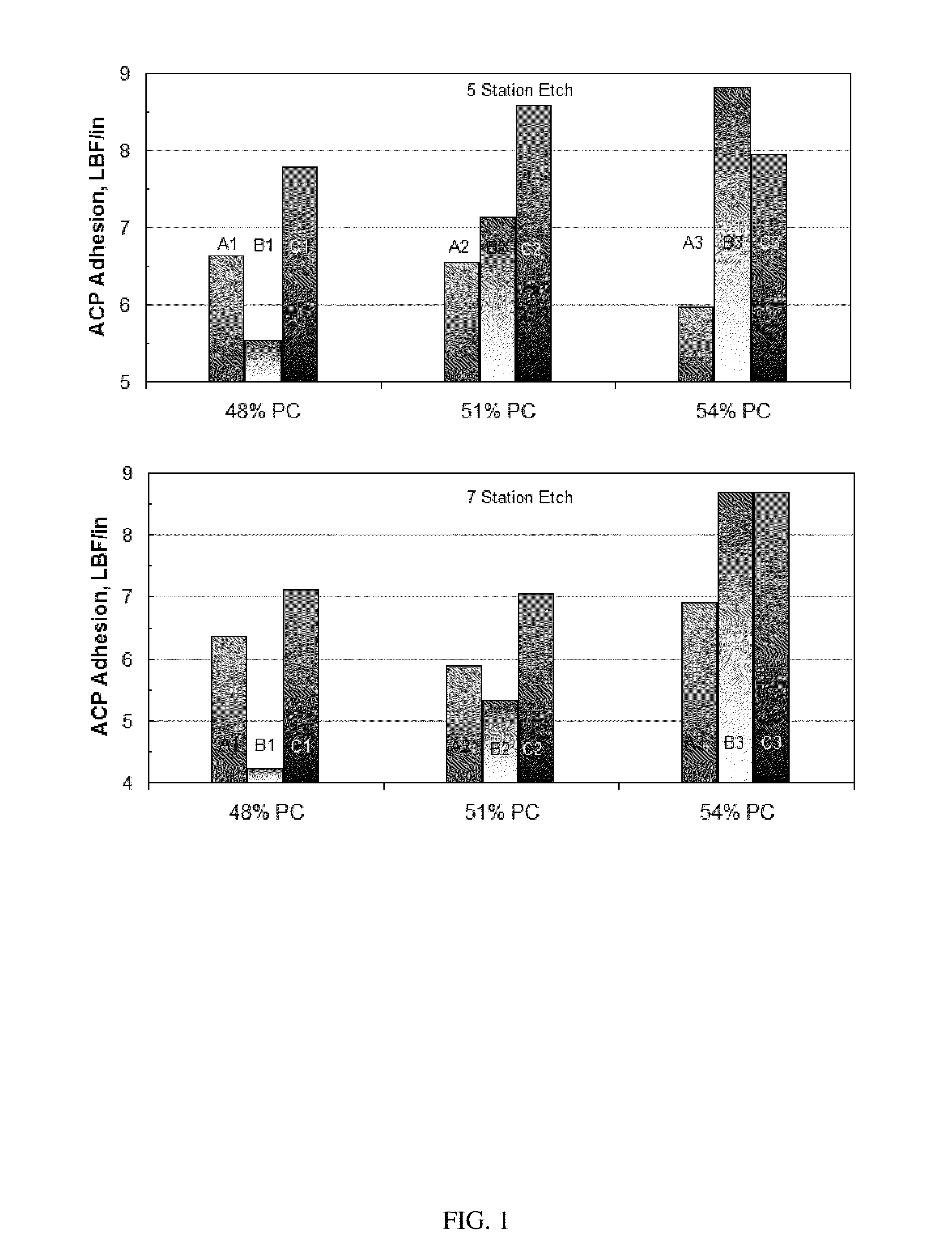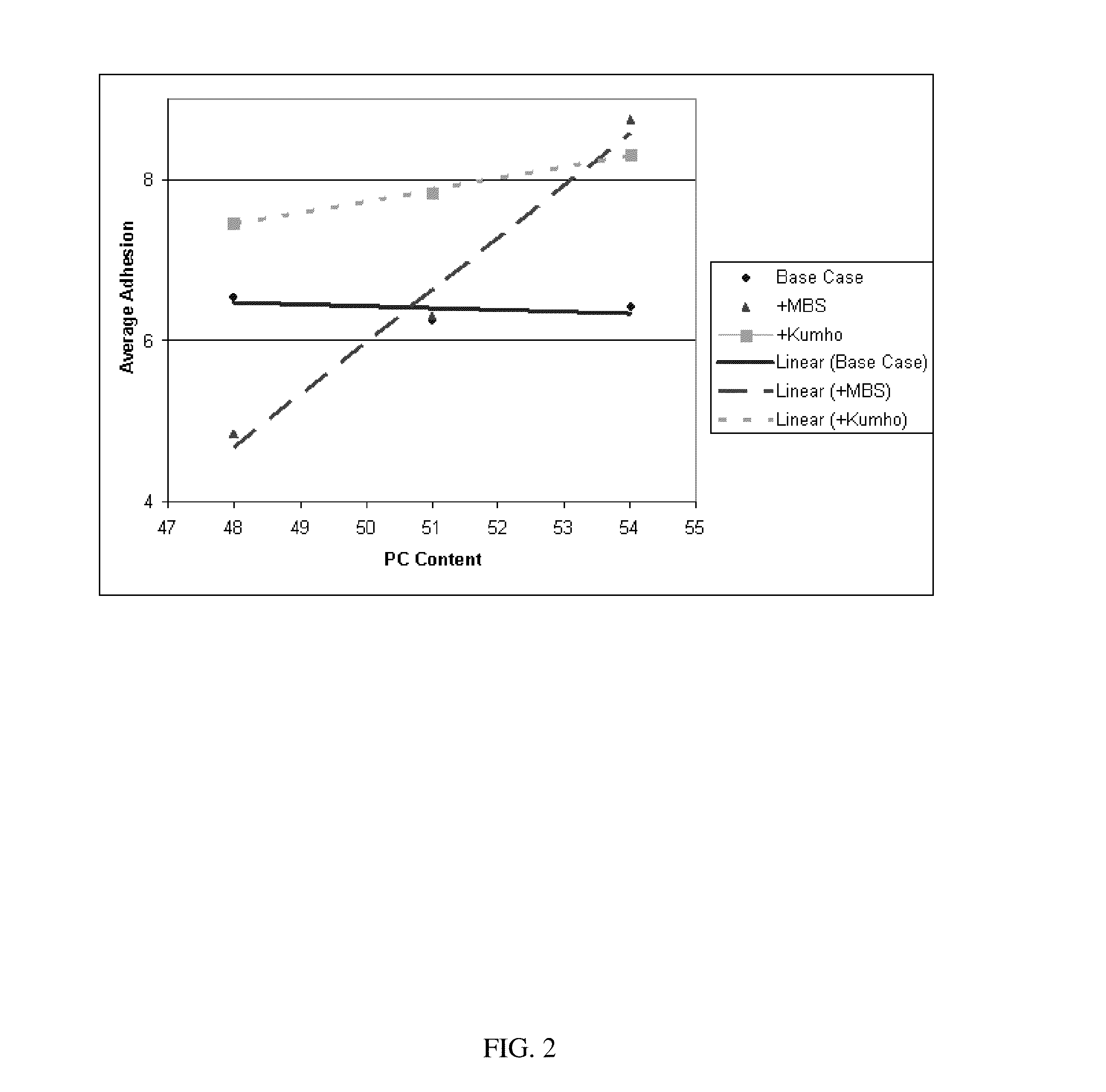Polycarbonate blends having improved electroplate adhesion
a technology of polycarbonate blends and electroplates, which is applied in the direction of film/foil adhesives, tyre parts, dentistry, etc., can solve the problems of low electroplate adhesion value of the resultant metal electroplated layer to the plastic substrate, thermal shock failure, worm tracking, etc., and achieve the effect of improving electroplate adhesion values
- Summary
- Abstract
- Description
- Claims
- Application Information
AI Technical Summary
Benefits of technology
Problems solved by technology
Method used
Image
Examples
examples
[0148]The following examples are put forth so as to provide those of ordinary skill in the art with a complete disclosure and description of how the methods, devices, and systems disclosed and claimed herein are made and evaluated, and are intended to be purely exemplary and are not intended to limit the disclosure. Efforts have been made to ensure accuracy with respect to numbers (e.g., amounts, temperature, etc.), but some errors and deviations should be accounted for. Unless indicated otherwise, parts are parts by weight, temperature is in C or is at ambient temperature, and pressure is at or near atmospheric.
[0149]The materials shown in Table 1 were used to prepare the compositions described herein. Batches were prepared of the formulations shown in Table 2. Sample batches (40 LBS) were prepared by pre-blending all constituents in a dry-blend and tumble mixing for 20 minutes. The pre-blend was fed directly to a co-rotating twin screw extruder (30 mm) operated under standard proc...
PUM
| Property | Measurement | Unit |
|---|---|---|
| weight percent | aaaaa | aaaaa |
| wt % | aaaaa | aaaaa |
| wt. % | aaaaa | aaaaa |
Abstract
Description
Claims
Application Information
 Login to View More
Login to View More - R&D
- Intellectual Property
- Life Sciences
- Materials
- Tech Scout
- Unparalleled Data Quality
- Higher Quality Content
- 60% Fewer Hallucinations
Browse by: Latest US Patents, China's latest patents, Technical Efficacy Thesaurus, Application Domain, Technology Topic, Popular Technical Reports.
© 2025 PatSnap. All rights reserved.Legal|Privacy policy|Modern Slavery Act Transparency Statement|Sitemap|About US| Contact US: help@patsnap.com


